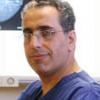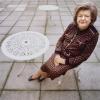Early detection in breast cancer is one of the most important ways doctors can save lives.
If breast cancer is found early, there are more treatment options and a better chance for survival.
A pilot study has just revealed the potential of new blood test that can spot signs of the disease up to five years before there are any clinical signs of it.
The test – which has been researched by scientists at the University of Nottingham (UK) – identifies the body's immune response to substances produced by tumour cells.
Tumour-associated antigens are good indicators of cancer
Cancer cells produce proteins called antigens that trigger the body to make antibodies against them – autoantibodies. Researchers discovered these tumour-associated antigens (TAAs) are good indicators of cancer, and now they have developed panels of TAAs that are known already to be associated with breast cancer to detect whether or not there are autoantibodies against them in blood samples taken from patients.
Researchers from the Centre of Excellence for Autoimmunity in Cancer (CEAC) group at the School of Medicine, University of Nottingham, took blood samples from 90 breast cancer patients at the time they were diagnosed with breast cancer and matched them with samples taken from 90 patients without breast cancer (the control group).
Screening technology is key
They used screening technology (protein microarray) that allowed them to screen the blood samples rapidly for the presence of autoantibodies against 40 TAAs associated with breast cancer, and also 27 TAAs that were not known to be linked with the disease.
Ms Daniyah Alfattani, a PhD student in the group, said: "The results of our study showed that breast cancer does induce autoantibodies against panels of specific tumour-associated antigens. We were able to detect cancer with reasonable accuracy by identifying these autoantibodies in the blood."
The researchers identified three panels of TAAs against which to test for autoantibodies. The accuracy of the test improved in the panels that contained more TAAs. The panel of five TAAs correctly detected breast cancer in 29% of the samples from the cancer patients and correctly identified 84% of the control samples as being cancer-free. The panel of seven TAAs correctly identified cancer in 35% of cancer samples and no cancer in 79% of control samples. The panel of nine antigens correctly identified cancer in 37% of cancer samples and no cancer in 79% of the controls.
A cost-effective way to save lives
"We need to develop and further validate this test," said Ms Alfattani. "However, these results are encouraging and indicate that it's possible to detect a signal for early breast cancer. Once we have improved the accuracy of the test, then it opens the possibility of using a simple blood test to improve early detection of the disease."
The researchers are now testing samples from 800 patients against a panel of nine TAAs, and they expect the accuracy of the test to improve with these larger numbers.
"A blood test for early breast cancer detection would be cost effective, which would be of particular value in low and middle income countries. It would also be an easier screening method to implement compared to current methods, such as mammography," said Ms Alfattani.
With the right funding, the test might become available in the clinic in about four to five years.
How to spot breast cancer
According to Mr. Simon Marsh, Lead Clinician at the London Breast Clinic, the most common symptom is a definite lump: ‘All definite breast lumps should be seen by a breast specialist. The full assessment of a lump focuses on what is called the triple assessment. The lump is examined, mammograms and ultrasound scans may be performed and a tissue sample will be taken. This will give a definite diagnosis in the vast majority of cases.’
He adds: ‘Most lumps are not cancer at all, but benign, such as cysts. Still, all lumps must be checked by a specialist. Occasionally a lump in the armpit can also be related to breast cancer.’
There are other changes that women should look out for. ‘Some women noticed a dimpling or puckering of the skin and this must always be reported to a doctor. Sometimes it will be due to age-related changes in the elastic tissue in the breast. Sometimes there will be a lump or an area of abnormal breast tissue associated with the dimpling and this may be due to a cancer.’
Mr Marsh adds that rashes are very common and usually harmless: ‘Most of these will turn out to be simple dermatitis or eczema. However, there is a very rare form of early breast cancer called Paget’s disease that can sometimes look like eczema. An important difference is that normal eczema tends to be only on the areola around the nipple whereas Paget’s disease can go onto the nipple itself.’









